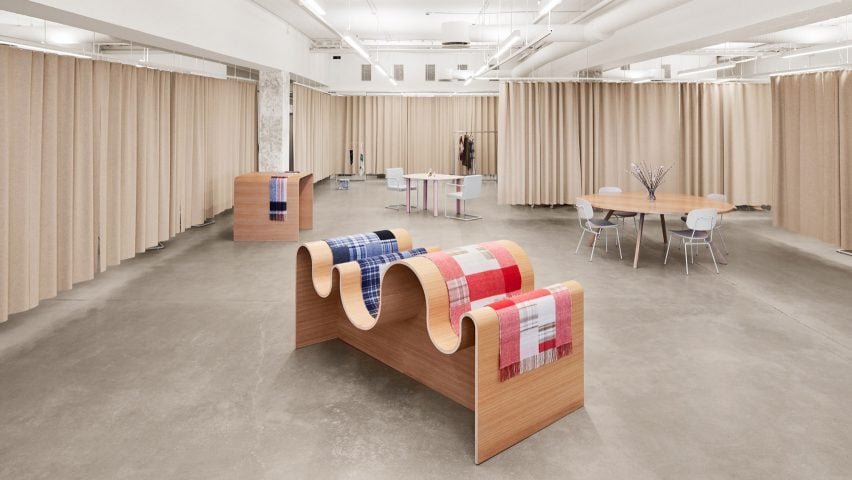
Snøhetta designs both online and physical spaces for Norwegian fashion label Holzweiler
Snøhetta has designed both physical and digital retail spaces for Oslo-based fashion label Holzweiler, featuring a muted colour palette and gridded elements.
Holzweiler was keen to offer its customers a similar retail experience both online and in store, so asked Snøhetta to design a showroom and flagship store, but also to create a website to match.
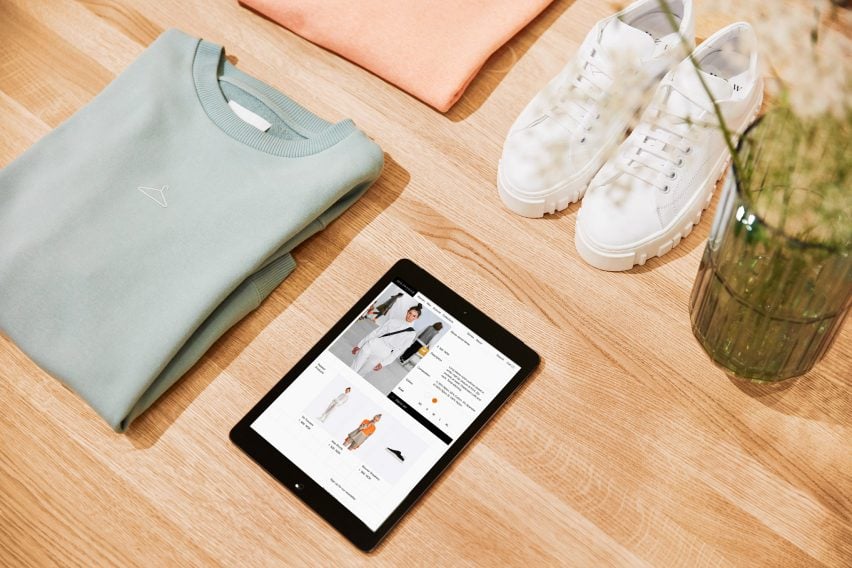
"The aim with the showroom, the flagship store and the online sales channel that we have designed for Holzweiler has been to create a seamless and holistic customer experience that brings the brand and people closer together," explained Snøhetta co-founder Kjetil Trædal Thorsen.
"The collaboration has resulted in the design of distinctive physical and digital spaces where customers can explore the Holzweiler universe across several dimensions."
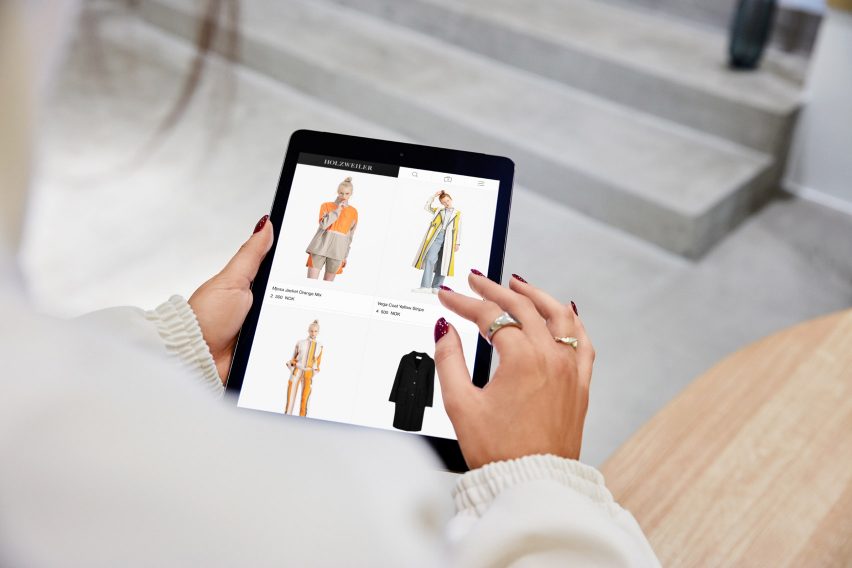
A pared-back aesthetic was adopted for everything. The colour palette is light and simple, with bold graphic elements featuring throughout.
On the website, this takes the form of a grid display, which references the brand's signature chequered scarves.
In the showroom and store, this is translate into gridded shelving elements, which are paired with curvy garment displays, designed to evoke the brand's handicraft approach. Other details include concrete floors and oak tables.
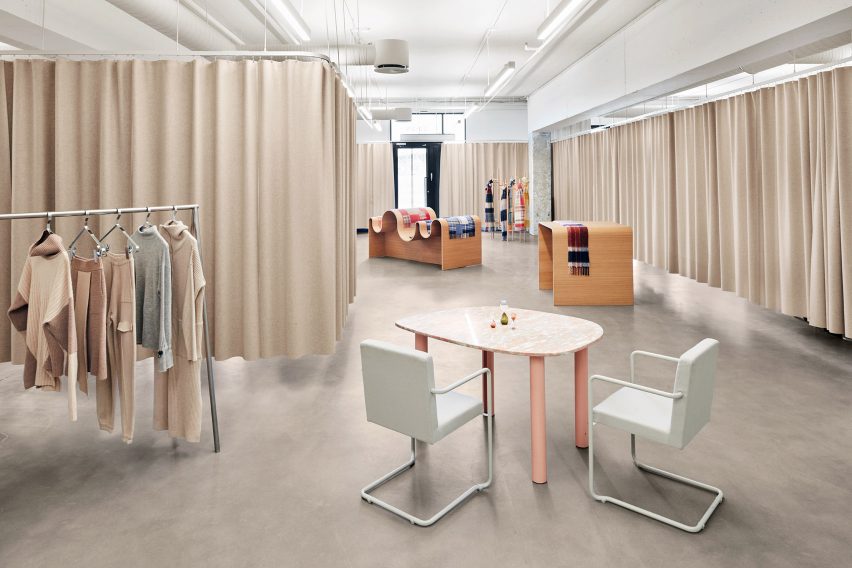
The showroom is located at Lysaker Brygge harbour, on the outskirts of the city, and is designed to be flexible, to function as "an ever-evolving" backdrop to Holzweiler's changing collections.
The space features beige wool curtains, which are attached to a grid-like system mounted on the ceiling. While nodding to the brand's trademark scarves, this also allows the space be opened out or made into a series of more intimate rooms.
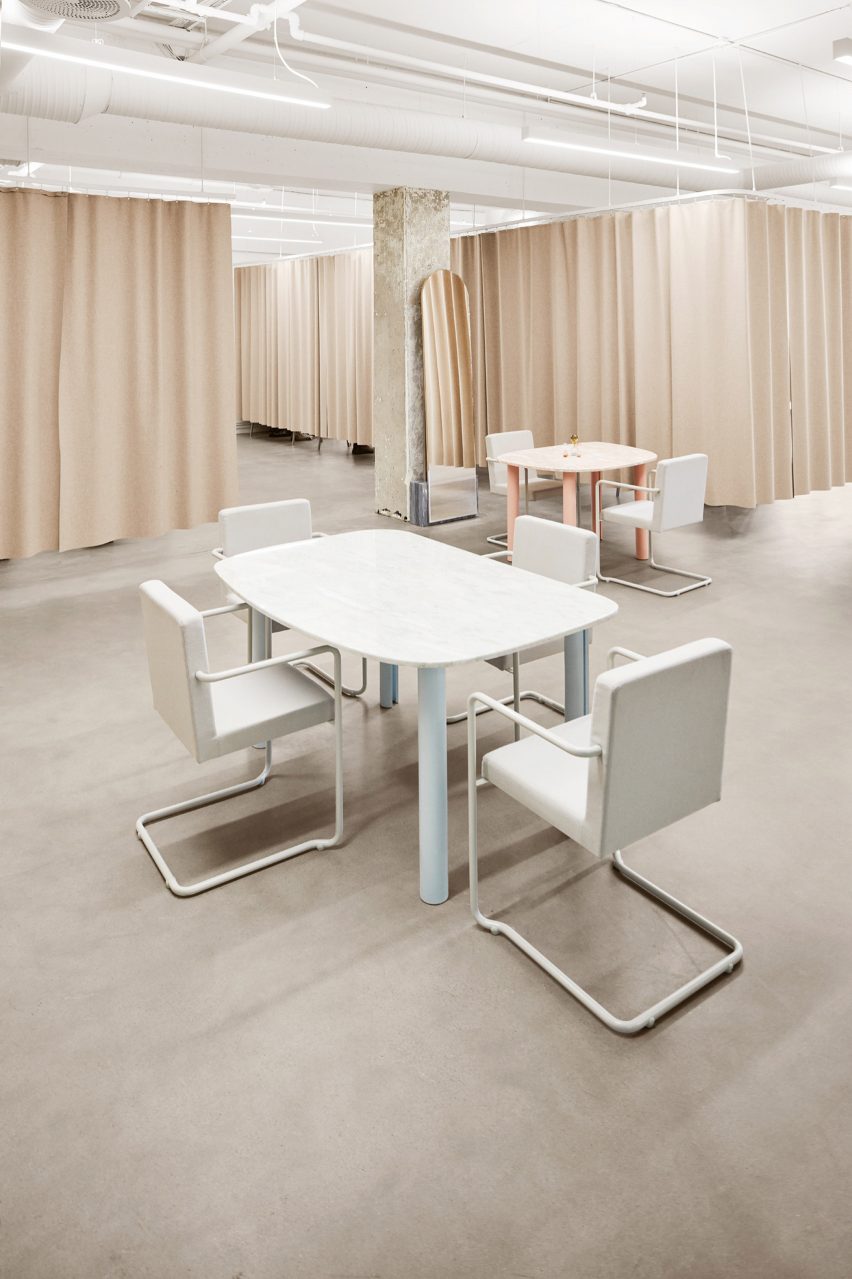
The rest of the showroom was designed by Snohetta to evoke "a modern-day factory" with a "warm yet at the same time industrial feel".
Concrete columns and floors form the backdrop to an array of undulating oak garment displays, alongside oak and marble tables, and arch-like mirrors that are dotted throughout.
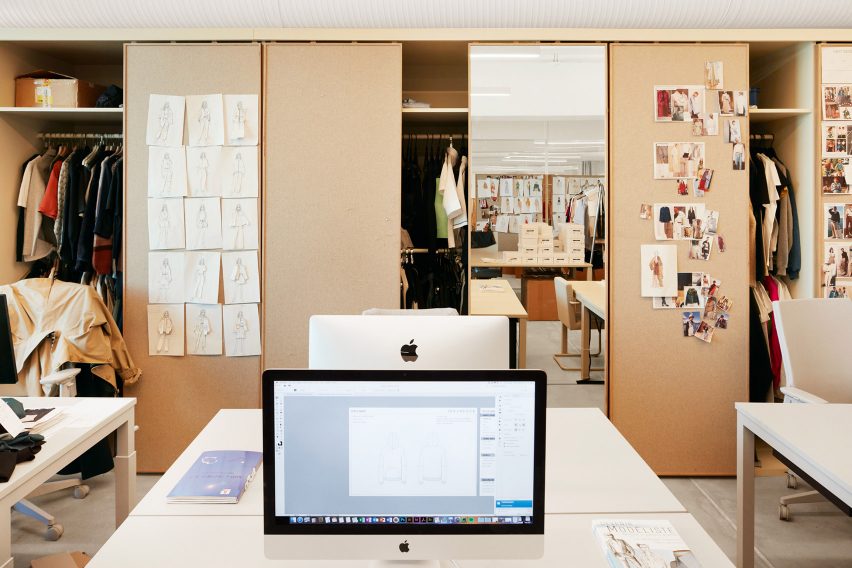
The showroom also includes a design studio for the brand. It is visually connected to the main room through large glass windows, and features a flexible storage system made from mirrors and idea boards.
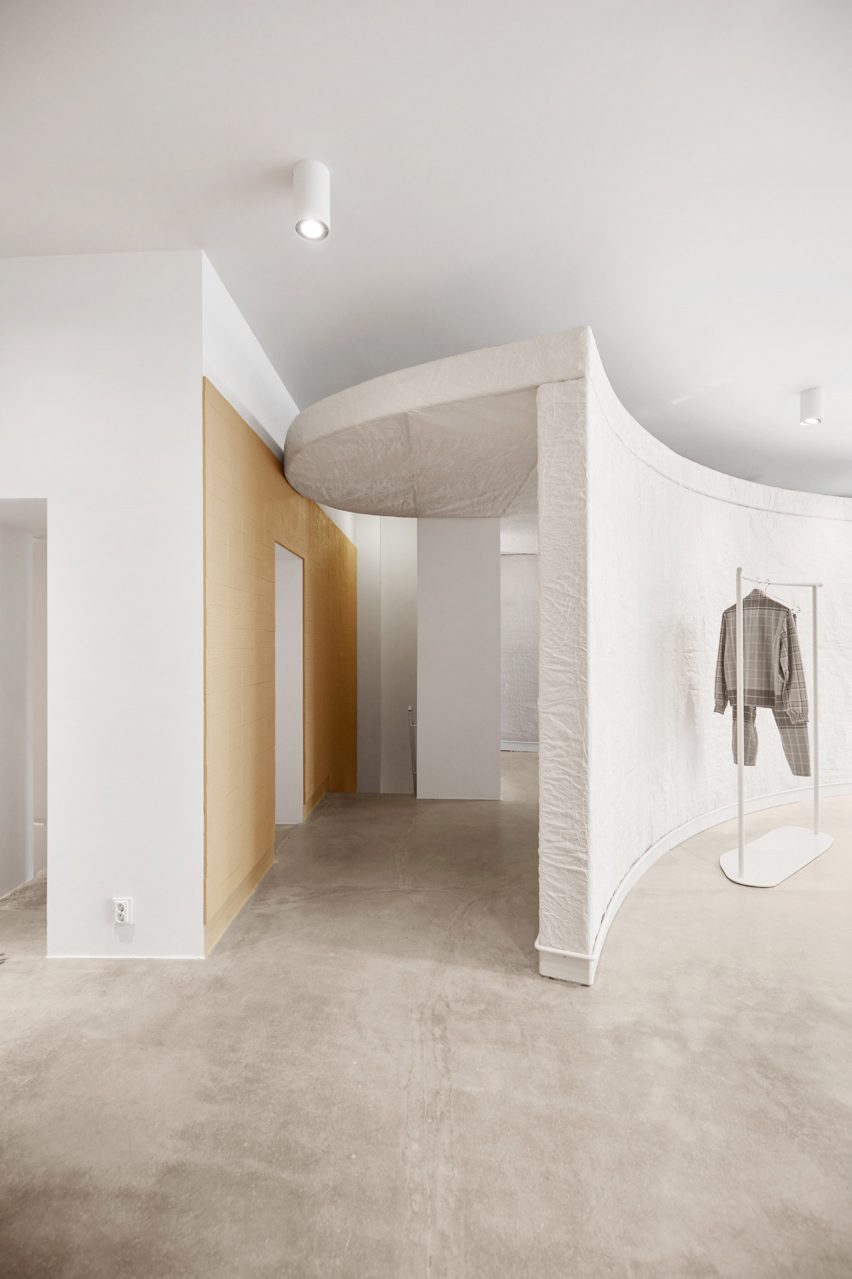
Over at Prinsens Gate, the flagship store was envisioned by Snøhetta as a more "clear-cut retail space".
Guests are welcomed by a curving passage enclosed by white paper walls, which opens out to the shop.
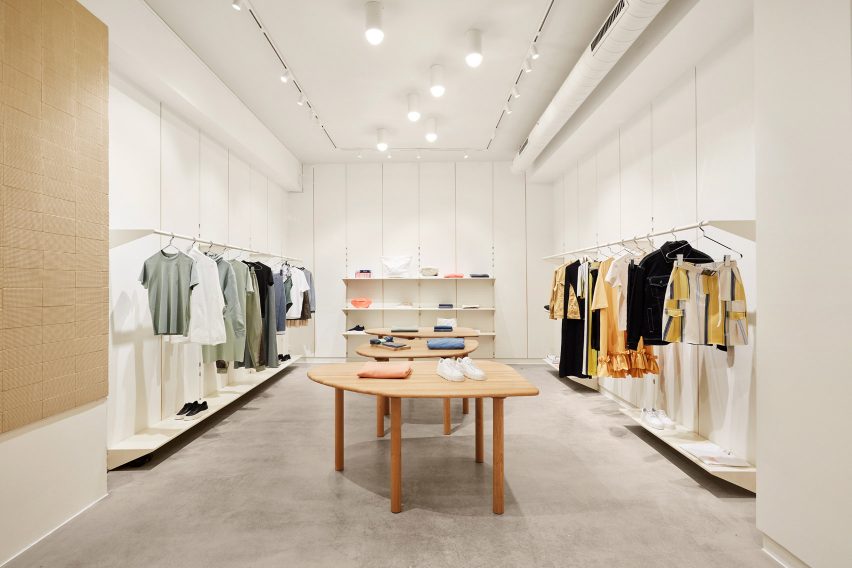
Inside, the shop is features walls clad in 3,000 handmade mustard-coloured tiles, alongside flexible shelf systems to echo the grid-patterned scarves.
Similarly to the showroom, custom-made oak furniture features throughout, contrasting with the polished concrete floor and a bespoke brushed, stainless steel cashier's desk.
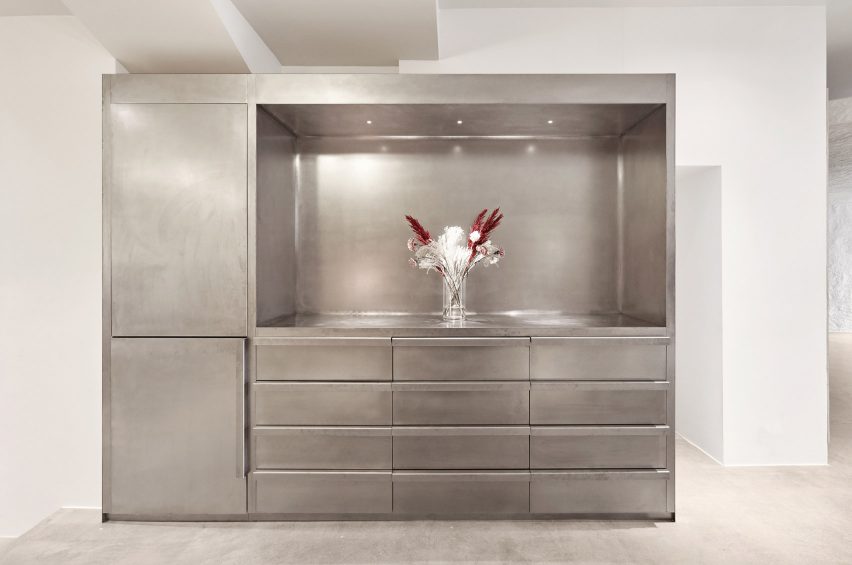
Founded in 1989 by architects Kjetil Trædal Thorsen and Craig Dykers, Snøhetta is an interdisciplinary architecture and design studio. It has offices in Oslo, New York, San Francisco, Paris, Innsbruck, Adelaide and Hong Kong.
Other recently completed projects by the studio include a crystal workshop for Swarovski, a mountaintop museum for Ötzi the Iceman and Europe's first underwater restaurant.